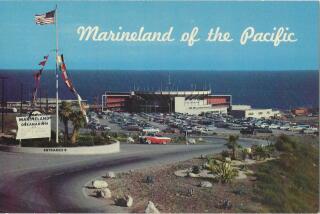Fate of dolphins leads ‘rescuers’ into deep water : With animal activists targeting marine parks, questions are raised about what is best for mammals.
- Share via
MARATHON, Fla. — Were Luther and Buck dumped into the ocean, without benefit of even basic survival skills, and thus put at risk of dying of starvation or predator attack?
Or were they liberated from a cruel captivity and returned to their natural state, a vast saltwater range where their instincts would allow them to thrive in freedom?
Luther and Buck are Atlantic bottlenose dolphins, and those questions are at the heart of a growing controversy in Florida over the fate of those two mammals and some 325 other dolphins in captivity in the United States. Although attendance at parks such as Miami’s Seaquarium and Orlando’s Sea World attest to the public appetite for acrobatic animal shows, Hollywood films such as “Free Willy” promote the notion that keeping mammals as intelligent as dolphins and whales in tanks and pens is criminal.
“It is not a black-and-white issue,” said Randall Wells, a dolphin biologist with Mote Marine Laboratory in Sarasota, Fla. “Some dolphins in captivity may be release candidates, and others would not survive. But some factions have forgotten that our first responsibility has to be to the wild populations.”
Former Navy dolphins trained for underwater guard duty, Luther and Buck were released in late May into open waters some 30 miles offshore by Ric O’Barry, once head trainer for the popular “Flipper” television show and now an activist for dolphin liberation.
At the time of the release, O’Barry was a director of the Sugarloaf Dolphin Sanctuary near Key West, Fla., where Luther, Buck and a third Navy veteran, Jake, were being prepared to live on their own. O’Barry says they were ready.
The federal government says they were not. A week after being turned loose, Luther showed up in a Key West yacht basin, begging boaters for food. He was 50 pounds underweight and had a gash near his dorsal fin, according to Trevor R. Spradlin, a biologist with the National Marine Fisheries Service.
A week after that, Buck appeared near Marathon, also underweight and injured.
After both animals were recaptured, Luther and Jake--removed from Sugarloaf--were flown back to the Navy in San Diego, while Buck, deemed too weak to travel, was put in the custody of the Dolphin Research Center, a nonprofit organization. “Buck arrived here emaciated, in very poor condition,” Dana Carnegie of the research center said.
Referring to O’Barry, Carnegie said: “I think that points up the problems when you allow emotions to govern your actions.”
Days before Buck and Luther were released, two other dolphins being prepped for freedom in Central Florida escaped when someone cut open the fence surrounding their pen at the Dolphin Alliance. Those two dolphins, females called Bogey and Bacall who had spent years as performers, apparently remain at large in their native habitat near the Indian River.
Spradlin, the federal biologist sent to Florida from Washington to investigate both cases, says the government is not opposed to reintroduction to the wild. “But the point is that any release has to be done responsibly, scientifically, according to a strict protocol.”
Spradlin calls O’Barry “an extremist” who ignored the protocol. “He basically thumbed his nose at the federal government.”
As a result, O’Barry is being investigated for violations of the Marine Mammal Protection Act, while Sugarloaf Dolphin Sanctuary and its president, Lloyd A. Good III, are under investigation for violating the Animal Welfare Act by ignoring warnings not to release the dolphins and for failing to provide the animals with adequate veterinary care.
O’Barry, 56, an outspoken critic of aquatic parks and dolphin swim programs since repenting his involvement with “Flipper” more than 25 years ago, says the federal government and tourist attractions are sabotaging release programs to protect money-making theme parks. Of 326 bottlenose dolphins in captivity, 141 are in Florida.
But Wells, who in 1990 took part in what is one of the few, if only, documented successful dolphin releases, calls O’Barry’s actions irresponsible. Luther and Buck, Mississippi natives, “did not integrate with other dolphins in the Keys. They showed they were not ready,” Wells said.
Naomi Rose, a marine mammal scientist for the Humane Society of the United States, says the unauthorized releases are a setback for those who want to return all wild-caught dolphins to their native waters. The number of captive dolphins that are potential candidates for release may be as high as 150, she said.
Meanwhile, in Melbourne, Fla., Dolphin Alliance President Joe Roberts said he recently spotted Bogey and Bacall--pregnant and due to give birth this month--in local waters. “They appear to be making it,” Roberts said. “Now we want to get some photographs to prove it.”
More to Read
Sign up for Essential California
The most important California stories and recommendations in your inbox every morning.
You may occasionally receive promotional content from the Los Angeles Times.













